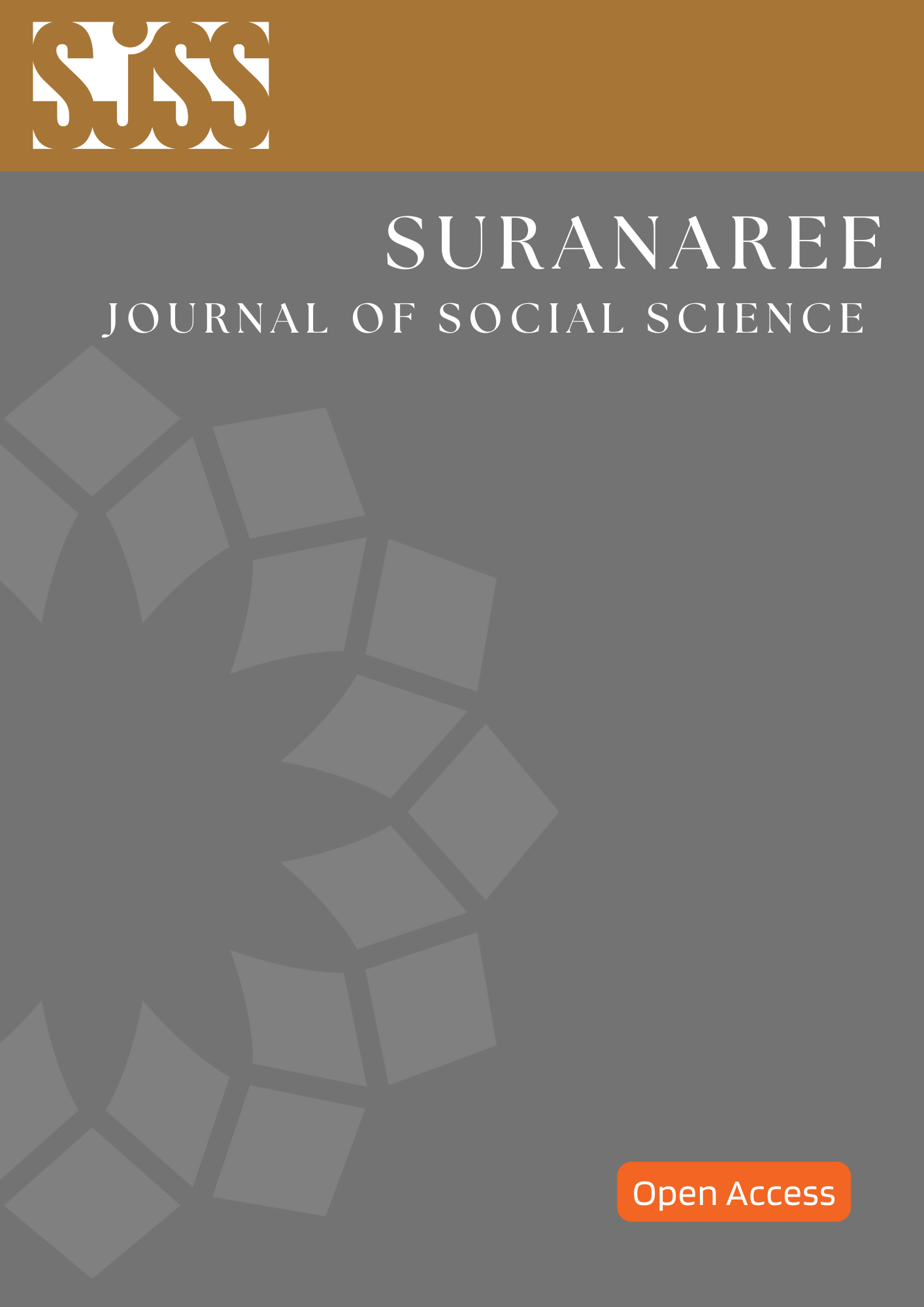Development of a Dissolved Oxygen (DO) and Electrical Energy Monitoring System for an Aquaculture Pond by Using NB-IoT Technology
Main Article Content
Abstract
Background and Objectives: One major issue faced by the intensive aquaculture farming of fish is the dissolved oxygen (DO) in pond, which is particularly critical at nighttime and exacerbated by power outages. Such incidents can significantly reduce DO levels. This research aimed to achieve two objectives: (1) to develop a DO monitoring system, and (2) to establish a system for monitoring the electrical status and for communicating wirelessly via Narrow Band (NB) networks to transmit data and report results to stakeholders.
Methodology: The equipment utilized in the experiment consisted of a DO monitoring system designed as a buoy-type measuring device. Solar panels were installed on top to provide power for driving the motor and the monitoring system, which utilizes the DO Meter model az 8403 to send RS232 data to a microcontroller unit (ATmega328p). This unit is connected to an ESP8266 via I2C communication, and the ESP8266 is connected to an NB board to transmit measurement results to a Cloud server. Meanwhile, the electrical status monitoring and notification system relies on the ESP8266 microcontroller unit, which connects to the SDM120CT monitoring device through RS485 Modbus RTU protocol. This setup sends measurement results to the Cloud server and sends notification about the electrical status via the LINE application.
Main results: During the experiment, it was found that the DO concentration was below 4 mg/L from 01:00 to 10:00. After this period, the DO gradually increased until 12:00, reaching a peak of approximately 12 mg/L during the day. Subsequently, it began to decrease after 17:00, dropping below 4 mg/L again by 01:00. Consequently, the operating time of the aerator needed adjustment. Normally, aeration in aquaculture is carried out for 18 hours per day, but it was reduced to only 9 hours per day.
Discussion: The results of the DO measurements influenced the management and operation of the aeration system in the fish farming pond. There was a reduction in aeration time by up to 9 hours per day, which is equivalent to a 50% reduction in electrical costs, resulting in maximum savings of 12,474 baht per cultivation cycle. Additionally, the system included notifications for electrical status, alerting if there was a voltage drop or if the voltage fell below 205V, which occurred 230 times within one month.
Conclusion: The DO level is directly proportional to the degree of light intensity. When the DO value exceeds the standard, the aeration system can be managed and adjusted accordingly. By considering the aeration system operating time based on the DO level, it is possible to save 15.40 kWh/day, which equates to 9,702 baht or 38.88% per cultivation cycle using management method 1. Meanwhile, management method 2 can help farmers save up to 19.80 kWh/day, which equates to 12,474 baht or 50.0%.
Article Details

This work is licensed under a Creative Commons Attribution-NonCommercial-NoDerivatives 4.0 International License.
References
Claude, E. B., & Frank, R. L. (1979). Water Quality Management in Pond Fish Culture. International Center for Aquaculture, Auburn University, USA.
Deseada Gutierrez Pascual, M. (2012). Indoor location systems based on zigbee networks. https://doi.org/10.13140/2.1.4300.1126
Harun, Z., Reda, E., & Hashim, H. (2018). Real time fishpond monitoring and automation using Arduino. In 6th International Conference on Electronic Devices, Systems and Applications 2017, IOP Conference Series: Materials Science and Engineering (pp 1-11). Kuching, Sarawak, Malaysia. https://doi.org/10.1088/1757-899X/340/1/012014
Mahamai, P., Sankwan, S., & Phusinak, Y. (2014). An automatic reporting system of dissolved oxygen for surface aerator. (In Thai). Industrial Technology Lampang Rajabhat University Journal, 7(2), 29-41.
Mukda, P. & Chaiwong, K. (2020). The suitable off-grid solar energy generator system with water pump. Agriculture and Technology Journal, 1(2), 123-132.
Ratchanwasin, C. & Aruxvanit, S. (2019). Estimation of the dissolved oxygen monitoring system via the NB IoT technology for aquaculture pond. (In Thai). B.S. thesis, Maejo University, Thailand.
Robert, S. (1998). Water quality considerations for aquaculture. http://web.deu.edu.tr/atiksu/ana58/aqua.pdf
Santoshkumar, H., & Hiremath, V. (2012). Design and development of wireless sensor network system to monitor parameters influencing freshwater fishes. International Journal of Computer Science and Engineering, 4, 1096-1103.
Saraubon, K. (2018). Develop IoT on Arduino and Raspberry Pi website. (In Thai). Intermedia.
Sriyasak, P., Chitmanat, C., Whangchai, N., Promya, J., & Lebel, L. (2015). Effect of water de-stratification on dissolved oxygen and ammonia in tilapia ponds in Northern Thailand. Int Aquat Res, 7, 287–299. https://doi.org/10.1007/s40071-015-0113-y
Sriyasak, P., Whangchai, N., Chitmanat, C., Promya, J., & Lebel, L. (2014). Impacts of climate and season on water quality in aquaculture ponds. KKU Research Journal, 19(5), 743-751.
Thamnu, S. (2018). Smart environmental monitoring and aerator control system by sharing energy source in an aquatic animal pond. (In Thai). M.S. thesis, Maejo University, Thailand.
Thapphadung, Y. (2019). Effects on the motor when voltage and frequency change. (In Thai). https://www.pea.co.th/esd/electrical-engineering-articles/ArtMID/13545/ArticleID/113902/ผลกระทบที่มีผลต่อมอเตอร์เมื่อแรงดันไฟฟ้าและความถี่เกิดการเปลี่ยนแปลง
Sukrismon, Y., Aripriharta, Hidayatullah, N., Mufti, N., Handayani, A. N., & Horng. G. J., (2019). Smart fishpond for economic growing in catfish farming. In 2019 International Conference on Computer Science, Information Technology, and Electrical Engineering (ICOMITEE) (pp 49-53). https://doi.org/10.1109/ICOMITEE.2019.8921233
Zanaj, E., Caso, G., De Nardis, L., Mohammadpour, A., Alay, Ö., & Di Benedetto, M-G. (2021). Energy efficiency in short and wide-area IoT technologies—A Survey. Technologies, 9(1), 22. https://doi.org/10.3390/technologies9010022
Zhang, M., Li, D., Wang, L., Ma, D., & Ding, Q. (2011). Design and development of water quality monitoring system based on wireless sensor network in aquaculture. Computer and Computing Technologies in Agriculture IV: CCTA 2010, 347, 629-641. https://doi.org/10.1007/978-3-642-18369-0_76
Zougmore, T.W., Malo, S., Kagembega, F., & Toguyeni, A. (2018). Low cost IoT solutions for agricultures fish farmers in Africa: A case study from Burkina Faso. In 2018 1st International Conference on Smart Cities and Communities (SCCIC) (pp 1-7). https://doi.org/10.1109/SCCIC.2018.8584549


